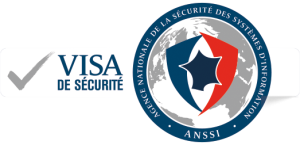BLOGPOST
75% of Security Experts Believe Remote Working using Remote Access Increases Cyberattack Risks. Are They Right?
According to At Bay, in 2023, 58% of direct ransomware incidents were tied to a remote access vulnerability. On top of that, hackers shifted their focus from RDP to targeting self-managed VPNs, which accounted for 63% of ransomware events linked to remote access.
Remote access security in industrial settings is something I’m seeing more and more in my daily work.
While it’s true that industrial organizations have made significant strides in digitizing their processes, sometimes this transformation has happened without fully considering critical security aspects of remote access.
So, what are these critical aspects?
Let me name a few to give you an idea:
- legacy systems, limited visibility,
- IT-OT convergence, regulatory requirements,
- internal risks, inadequate network segmentation, and
- remote access vulnerabilities, to name just a few.
If you work in the industrial sector, this scenario might sound familiar: suddenly, you need remote support, so you open multiple VPN connections from various vendors. But, of course, this turns your network into a sieve, filled with potential threats.
How can you avoid these risks? Here are three strategies that I’ve seen work time and time again.
1. Implement a Zero Trust Security Framework
Think of a medieval fortress. In the past, if you were inside the walls, you were considered trustworthy. But that’s not how it works anymore. Today, Zero Trust security takes things further: no one is trusted until proven otherwise. Whether you’re inside or outside the network, every access must be constantly verified.
Where do you start? It is customary to first assess and map out all your assets and network resources to get a clear picture of your environment. However, it is also essential to deploy the first brick of your security to lock down access to your production.
For example, implement granular access controls with a Privileged Access Management (PAM) tool and use a multi-factor authentication (MFA). This will also allow you to ensure continuous verification to monitor and audit network access and activity on an ongoing basis.
The key here is to ensure that only the right people and devices access what they truly need. This way, you’re not only keeping intruders out but also preventing potential attackers from moving laterally within your network. It’s like locking every door and window in your fortress.
2. Centralize and Unify Access to Your OT Systems
I remember a conversation with a plant manager who said, “Gwendal, we have so many entry points, I don’t even know where to start closing them.” And that’s exactly the problem. The more doors you have, the harder it is to protect your fortress.
That’s why one of the first steps you should take is centralizing access to your OT systems into a single-entry point.
Not only does this make it easier to manage remote connections, but it also gives you much stronger control over who gets in and what parts of your network they can access. It’s like having one drawbridge for your fortress—much easier to monitor and control.
And the best part? You can do this without complicating production. The goal is for security to flow as smoothly as water in a river without slowing down your operations.
3. Continuous Monitoring and Anomaly Detection
Here’s a little secret: it’s not enough to just build a wall around your fortress. You need to keep watch 24/7 and maintain communication from the check points to the command room. This is where continuous monitoring comes into play.
Deploying sensors and tools throughout your infrastructure allows you to spot and respond to unusual activity before it becomes a serious problem. And of course, you need to be able to easily connect your monitoring system to SIEM (Security Information and Event Management) to merge all your cybersecurity tools into a single point, as we saw earlier (Centralize and Unify!).
I’ve seen firsthand how this makes a difference.
Once you implement continuous monitoring, you can detect anomalies in real time and act before the damage becomes irreversible. Plus, you get a complete record of everything happening, helping you learn and adjust your security strategy as needed.
Need more insights on securing remote access? Contact me and my team here.
Thanks for reading!
Related content
Related resources
A HOLLISTIC CYBER-PHYSICAL SECURITY
PAM4OT
Trace identity and access on industrial controls
A COMPETITVE EDGE





